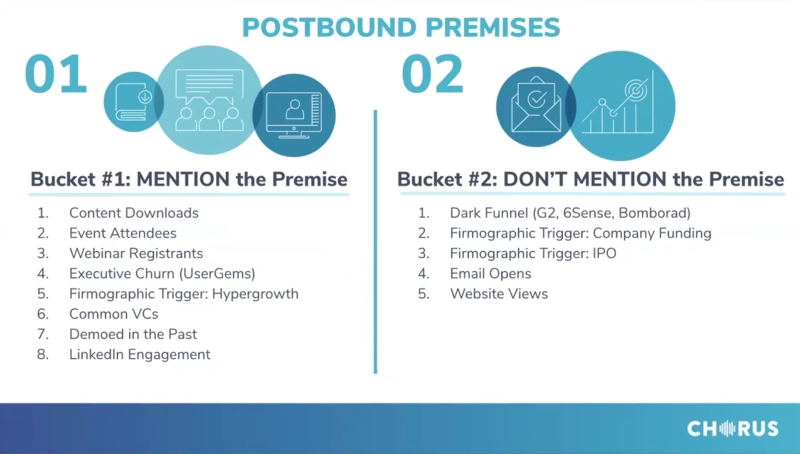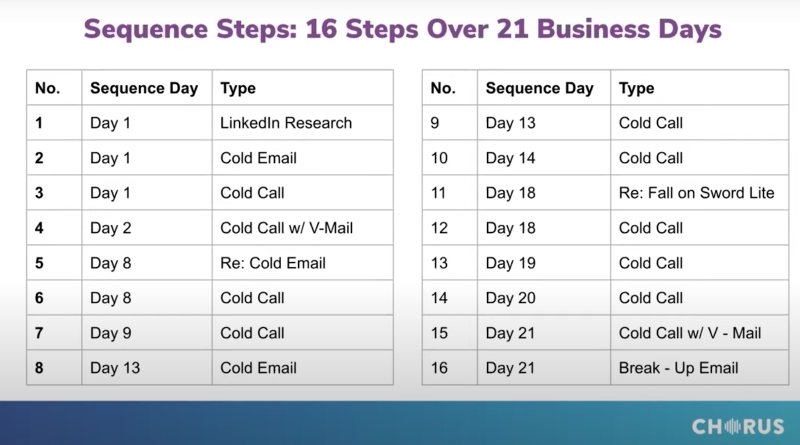- #1 Research your buyer persona
- Step 1: Investigate the case studies and schedule the meeting with your target buyer persona
- Step 2: Interview consumers
- Step 3: Connect with five people within each of your buyer personas
- Step 4: Interview your buyer persona internally
- Step 5: Ask salespeople why people buy
- #2 Build comprehensive sequences
- #3 Put premises in a solid cadence
- #4 Pick the best-personalized reason to reach out
- #5 Pay attention to follow-up emails
- #6 Do not follow any technique blindly
How to Build B2B Outbound Sales and Do Personalization at Scale
April 26, 2024 5 min. read

Contents:
Try AI-Driven Insights
Monitoring for Free
Discover new business ideas and growth opportunities using
our AI-powered insights monitoring tool
How often do you answer unpersonalized sales emails? Most people have never replied to a single one.
Personalization is key to high conversion rates as it ensures building a closer connection with prospects. However, while expanding outreach, it gets more challenging to stick to the personal approach, and your email is likely to dissolve into countless emails that no one cares about and redirects to the “Spam” folder. The same goes for the cold calls.
Is it possible to find a balance between scaling and personalizing? Becc Holland, Head of Sales Development for Chorus.ai, believes that personalizing outreach can be and should be done at scale. In her talk at Blissful Prospecting with Jason Bay, Becc shared the sales playbook that her sales team uses at Chorus.ai.
We really liked the playbook and decided to summarize a few key insights from Becc. You can see the full webinar and other webinars from Jason Bay here.
If you’re also wondering how to get more responses and how to personalize at scale, follow these outreach strategies:
#1 Research your buyer persona
Becc believes that instead of learning it by heart and following blindly the input from the marketing team, the sales reps need to dig deeper and get familiar with the target buyer persona themselves.
Step 1: Investigate the case studies and schedule the meeting with your target buyer persona
First, examine the case studies and reach out to people who purchased your product before. Try to grasp the goals, pains, and wishes of your customers. Learn exactly how they use your product, and whether they are pleased with it. Reach out the customers who were used in the case studies and connect with them. You are likely to hear different stories then the ones described in published case studies. Moreover, you’re likely to learn new insights and broaden the understanding of your buyer persona once you talk to them in person.
Step 2: Interview consumers
Fnd at least 5 buyer persona segments and ask them to share honestly about the challenges they have, things that they want, and afterwards brainstorm on how your product fits into that.
Tip: This is not pitching, this is a curiosity, so offering your product as a reply to someone’s help is not the best idea. Don’t try to sell your product. Just listen and dig deeper to uncover more insights.
Step 3: Connect with five people within each of your buyer personas
The more you investigate the field and gather the pains, wishes, needs, and ideas – the better.
Step 4: Interview your buyer persona internally
If you can find your buyer persona within the organization you work for, have a conversation with them. They are easier to reach and may provide you with useful insights on what your prospects are looking for.
Step 5: Ask salespeople why people buy
Finally, you have to make sure that you are on the same page with your sales team, and that you all have the same perception of your buyer persona. Thus, go to your sales reps and ask them who they are selling to and how.
Tip: Once you have completed all these stages, you can go to the marketing team and ask them the same question to build on top of your own insights and discoveries.
#2 Build comprehensive sequences
Once you discovered and researched your buyer persona, you can build a complete sales playbook.
Becc highlights 3 three types of leads:
1. Inbound, eg demo requests and leads from the website chat
2. Outbound – completely cold leads
3. Postbound – a diverse category in-between. The latter do not necessarily want your product yet, but they have had some interaction with your organization, eg attended webinars or downloaded your brochures.
The Chorus.ai team uses 13 premises that they divide into two categories. The first one combines premises an SDR can mention in the email:
• Content downloads
• Event attendees
• Webinar registrants
• Executive churn (user gems)
• Firmographic trigger: hyper-growth
• Common VCs
• Demoed in the past
• LinkedIn engagement
Tip: Downloading content is not equal to requesting a demo. When mentioning these premises in emails, pair them with something more personalized to warm prospects up, and make them interested in your product.
The second one is less-direct premises that you should omit in emails as they are more about the organization of yours, not the prospects themselves:
• Dark funnel (ex., G2)
• Firmographic trigger: company funding
• Firmographic trigger: IPO
• Email opens
• Website views
Tip: Don’t forget to root back to your product. Personalizing doesn’t mean to focus entirely on prospects. Your goal is to sell, not to show you are aware of someone’s life and activities.

#3 Put premises in a solid cadence
Here is the cadence that the Chorus.ai team uses:
Day 1 – LinkedIn research, cold email, cold call
Day 2 – Cold email w/ voicemail
Day 8 – Re: cold email, cold call
Day 9 – Cold call
Day 13 – Cold email, cold call
Day 14 – Cold call
Day 18 – Re: fall on sword lite, cold call
Day 19 – Cold call
Day 20 – Cold call
Day 21 – Cold call w/ voicemail, break up email
Tip: Try pattern disruption – be more aggressive on the back end of the week/day, rather than in the first couple of calls or in the early morning.

#4 Pick the best-personalized reason to reach out
Becc distinguishes 5 buckets of personalized premises that can be easily found within a LinkedIn profile:
1. Self-authored content: webinars, articles, posts (the highest response rates);
2. Engaged content: liked, shared, commented;
3. Self-attributed traits: profile line, headline, the company line;
4. Junk drawer: schools attended, personal interests, hobbies;
5. Company: M&A, posts, blogs, hiring, website language.
Tip: As for the junk drawer, don’t go into too personal details. It may be annoying, offensive, or even creepy.
#5 Pay attention to follow-up emails
Becc stresses the need to send well-structured follow-up emails.
The first email is composed of 4 lines:
– 1st and the longest line – a reason for the outreach;
– 2nd line – the value proposition you offer;
– 3rd line – CTA;
– 4th line – push-pull technique (“either way, keep creating such a useful content”-like thing).
The second email is a reply to the first email (“Any thoughts?”). The third one is the rewording of the first email without mentioning that you have already outreached. The fourth email is the reply to the third one. Finally, in the fifth email, you “check for the last time”, promising to stop reaching out from that very minute.
Tip: If your message says kind of “this is the last time I reach out” – you can use it only once and you will need to really stop coming back to this customer.
#6 Do not follow any technique blindly
Finally, don’t use any technique you have heard from some coach or famous sales rep by default. Not all the tactics may work for you, or at least some adjustments will be needed. Any tactics may be scaled and personalized! However, salespeople should give them a test drive and incorporate them wisely.
The full recording of Jason Bay and Becc Holland’s talk may be found here
Enjoy the playbook and remember that with Leads Finder you can maximize revenue by focusing on sales tasks while we source, enrich, and validate your data.
Best,
Signum.AI team
More useful content on our social media:
